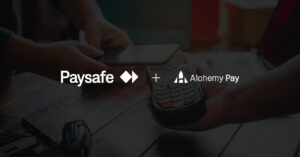The idea of deferred payments isn’t novel; installment payments historically catered to cash-strapped individuals. Credit cards, a standout 20th-century financial product, essentially function as a buy now, pay later mechanism. However, evolving user preferences, shaped by digital convenience, have altered expectations. Younger generations, accustomed to a digital-first environment, perceive traditional credit card services as outdated. This shift opened avenues for disruption, enabling nimble competitors to enter the market, and offering more cost-effective, accessible, and innovative products.
The prominent BNPL players didn’t emerge overnight. Klarna (2005), Affirm (2012), Zip (2013), and Afterpay (2014) initially targeted customers overlooked by established entities. However, the COVID-19 pandemic and subsequent lockdowns acted as catalysts for BNPL’s ascent.
The surge in online shopping during lockdowns propelled BNPL to the forefront. Through iterations and enhanced offerings, BNPL startups managed to seize a larger market share from conventional financial institutions.
What comes next in BNPL?
Strategic partnerships
The burgeoning BNPL fintech landscape foretells an inevitable truth: not all will sustain. Most BNPL providers hinge on transaction fees from retailers, enticing them with elevated average order values and enhanced conversion rates.
Studies reveal significant favorability toward BNPL services among Gen Z (42%) and Millennials (69%), with nearly half inclined to avoid retailers lacking BNPL options. However, the average Klarna transaction value in the UK stands at just $104. This underscores the imperative for BNPL fintechs to augment their gross merchandise value and secure economies of scale for survival, alongside maintaining sufficient reserves to mitigate potential losses.
Building on consumer loyalty
As BNPL becomes more standardized, retailers are poised to provide multiple BNPL options akin to various credit cards. Consequently, fintechs must diversify their product range to secure merchant and consumer loyalty. Strengthened loyalty not only fosters cross-selling opportunities but also amplifies offerings, particularly for firms with diverse financial and insurance products.
This evolution prompts the introduction of enhanced services and a broader spectrum of personal finance offerings. Expect BNPL to incorporate discounts, tailored shopping suggestions, expenditure analytics, virtual cards, insurance packages, and daily banking amenities. Notably, Afterpay introduced in-app advertisements, while Klarna provides price alerts for prospective purchases at better rates. The potential for investment products looms large—PayPal and Square are already delving into cryptocurrencies, and Affirm’s CEO, Max Levchin, hinted at a similar trajectory. Anticipate major BNPL brands announcing ventures into wealth management soon.
Regulations and competition
As the BNPL market burgeons, regulatory leniency prevails, a stark contrast to the oversight governing credit cards. However, this latitude is poised to transform with the market’s expansion, as concerns mount over potential debt spirals among users. While comprehensive research on the issue remains scarce, media reports highlight potential threats. Nearly half of BNPL users opt for the service due to budget constraints, and about 40% of American users admit to falling behind on payments. Though the extent of the problem remains uncertain, public sentiment is pressuring lawmakers toward stricter oversight of BNPL products.
Despite these concerns, established industry players persist. Amazon and other major providers have leveraged low entry barriers to introduce their BNPL options at checkout. Traditional banks are also embracing BNPL—JP Morgan Chase offers a multi-month payment plan at 0% interest with a nominal fee, while Goldman Sachs recently acquired GreenSky, specializing in home improvement loans.
Credit card issuers and neobanks are following suit. Mastercard will introduce its interest-free installment program, Visa has collaborated with Chargeafter for the Visa Installments BNPL API, and neobanks like Revolut and Monzo have integrated BNPL services for merchants. This shifting landscape suggests an imminent convergence of traditional and novel financial institutions into the BNPL sphere.
Conclusion
The prominent BNPL fintechs like Klarna, Affirm, and Afterpay are poised for a promising future, yet profitability and securing significant market share in the lending services sector remain formidable challenges. These industry leaders will rely on innovative product offerings and robust customer relationships to carve out substantial footholds in well-established banking markets. Presently, the battleground predominantly lies in the US, but expansive strategies are underway for global outreach. In emerging markets, there’ll likely be a race among global corporations to acquire smaller BNPL entities, aiming to establish widespread acceptance networks. Ultimately, the aftermath may unveil a few global titans alongside regional frontrunners in areas where major brands struggled to flourish.





